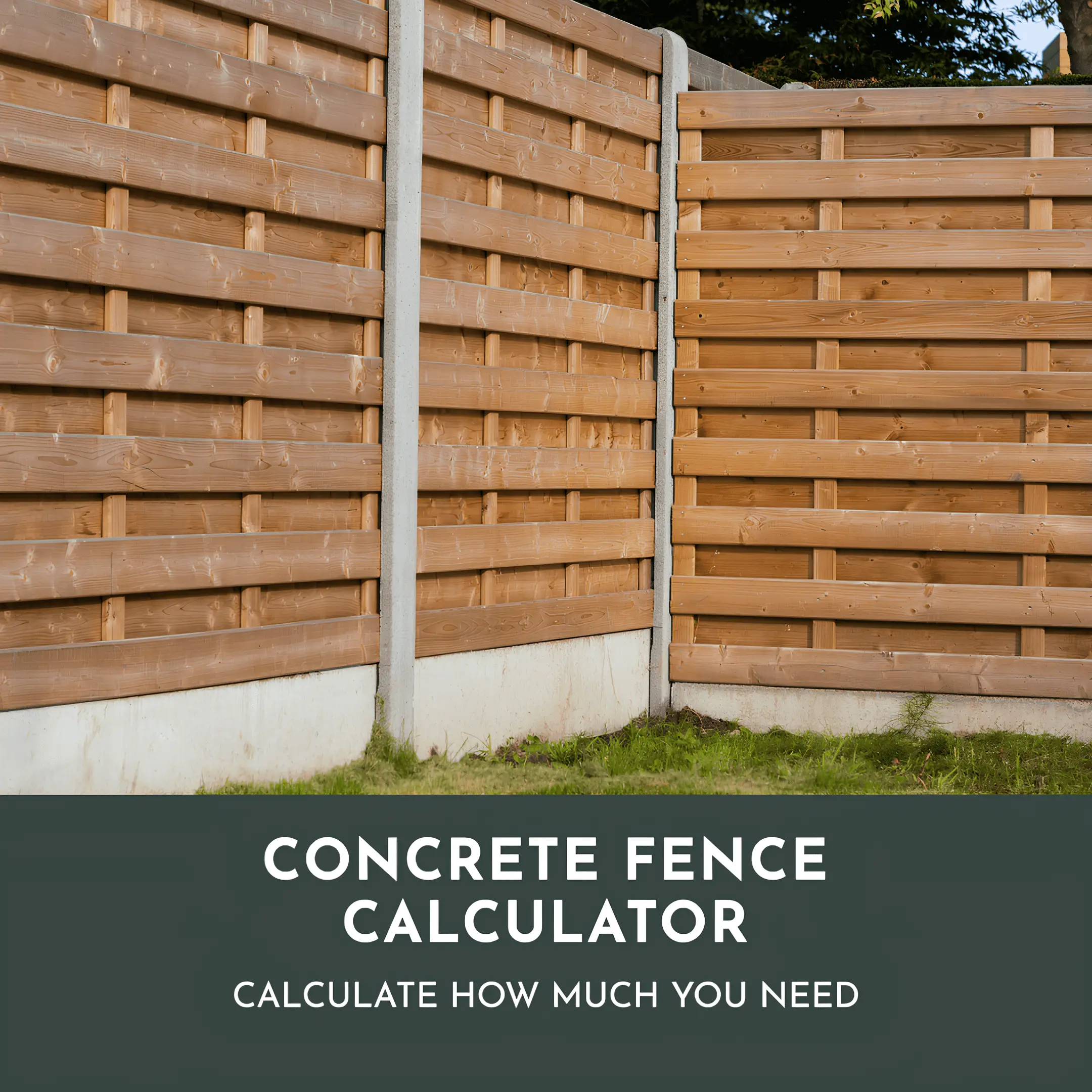Welcome to our free online fencing calculator. This user-friendly tool helps you estimate the number of fence panels, bases, and posts needed for your fencing project.
With options to choose from various panel types, base sizes, and post types, our calculator provides accurate results tailored to your specific needs.
Whether you’re a homeowner, contractor, or DIY enthusiast, this tool will save you time and effort while planning your fence installation.
How to Use the Fencing Calculator
Using our fencing calculator is easy. Follow these simple steps to get your fence estimation:
- Enter the total length of the fence in feet.
- Select the fence panel type from options such as Waney Edge Board, Close Board, and Pailing.
- Choose the base size (6 inches or 12 inches) and the base type (Plain Concrete, Timber, or Rock Faced Concrete).
- Pick the post type (Concrete or Timber) for your fence.
- Click the “Calculate” button to get the number of panels, bases, and posts needed for your fence.
Once you have your fence estimation, you can use this information to plan your fence installation, determine the materials needed, and estimate the overall cost of your project.
Fencing Calculator
Why Use Our Fencing Calculator
Our fencing calculator offers several benefits for anyone planning a fence installation:
- Accurate estimations: By considering various factors such as panel type, base size, and post type, our calculator provides precise estimations for your fencing project.
- Save time and effort: Instead of manually calculating the number of panels, bases, and posts, use our calculator to get instant results.
- Customizable options: With multiple options for panel types, base sizes, and post types, you can tailor the calculator to your specific fencing requirements.
- Free and easy to use: Our fencing calculator is free to use and requires no registration or download.
Start planning your fence installation today by using our free fencing calculator to estimate the number of panels, bases, and posts you’ll need.
Frequently Asked Questions
Q: How accurate is the fencing calculator?
A: Our fencing calculator provides accurate estimates based on the input values such as fence length, panel type, base size, base type, and post type. However, please note that the actual requirements may vary slightly due to factors like uneven terrain, unique fence designs, and local regulations.
Q: What types of fences can I calculate with this tool?
A: This fencing calculator is designed for estimating the number of panels, bases, and posts needed for wooden fences with different panel types (Waney Edge Board, Close Board, and Pailing), base types (Plain Concrete, Timber, and Rock Faced Concrete), and post types (Concrete and Timber).
Q: Can I use this calculator for other types of fences, such as chain link or vinyl?
A: This calculator is specifically designed for wooden fences. While you may be able to get a rough estimation for other types of fences, the accuracy may not be as high as for wooden fences.
Q: How do I account for gates or corners in the fence design?
A: This calculator does not directly account for gates or corners. However, you can adjust the fence length input to accommodate these features. For example, if you plan to install a gate, reduce the total fence length by the width of the gate and then use the calculator to estimate the remaining materials needed.
Q: Can this calculator help me estimate the cost of my fencing project?
A: While our fencing calculator does not provide cost estimations, it can help you determine the number of panels, bases, and posts needed for your fence. You can use this information to estimate the cost of materials and labor for your project by contacting local suppliers and contractors for their pricing.
Q: Do I need to account for post spacing when using this calculator?
A: Our calculator automatically factors in post spacing based on the panel length (6 feet) and the thickness of the chosen post type (concrete or timber). Therefore, you don’t need to worry about calculating post spacing separately.
Author Profile

- I have many qualifications and certificates in construction, such as City & Guilds, CPCS and CITB. These are the highest standards of training and competence in the industry. Whether you need help with plumbing, carpentry, bricklaying or any other trade, I’m here to help you succeed.
Latest entries
- March 6, 2024CalculatorsWall Tile Calculator: How Many Wall Tiles Do You Need
- February 29, 2024Roof Truss Cost Calculator
- December 31, 2023Wage Take Home Calculator
- December 30, 2023Day Rate Calculator

